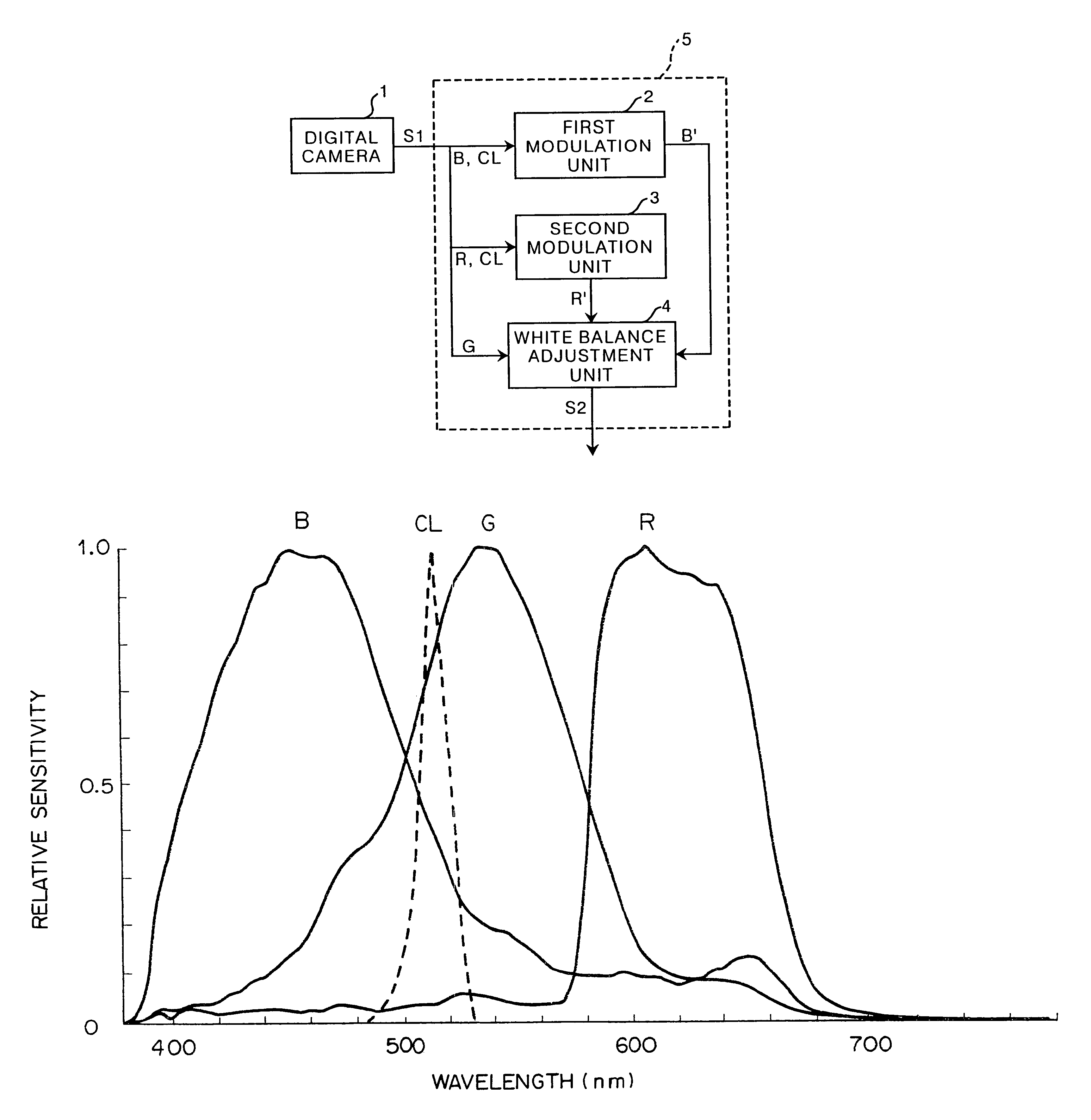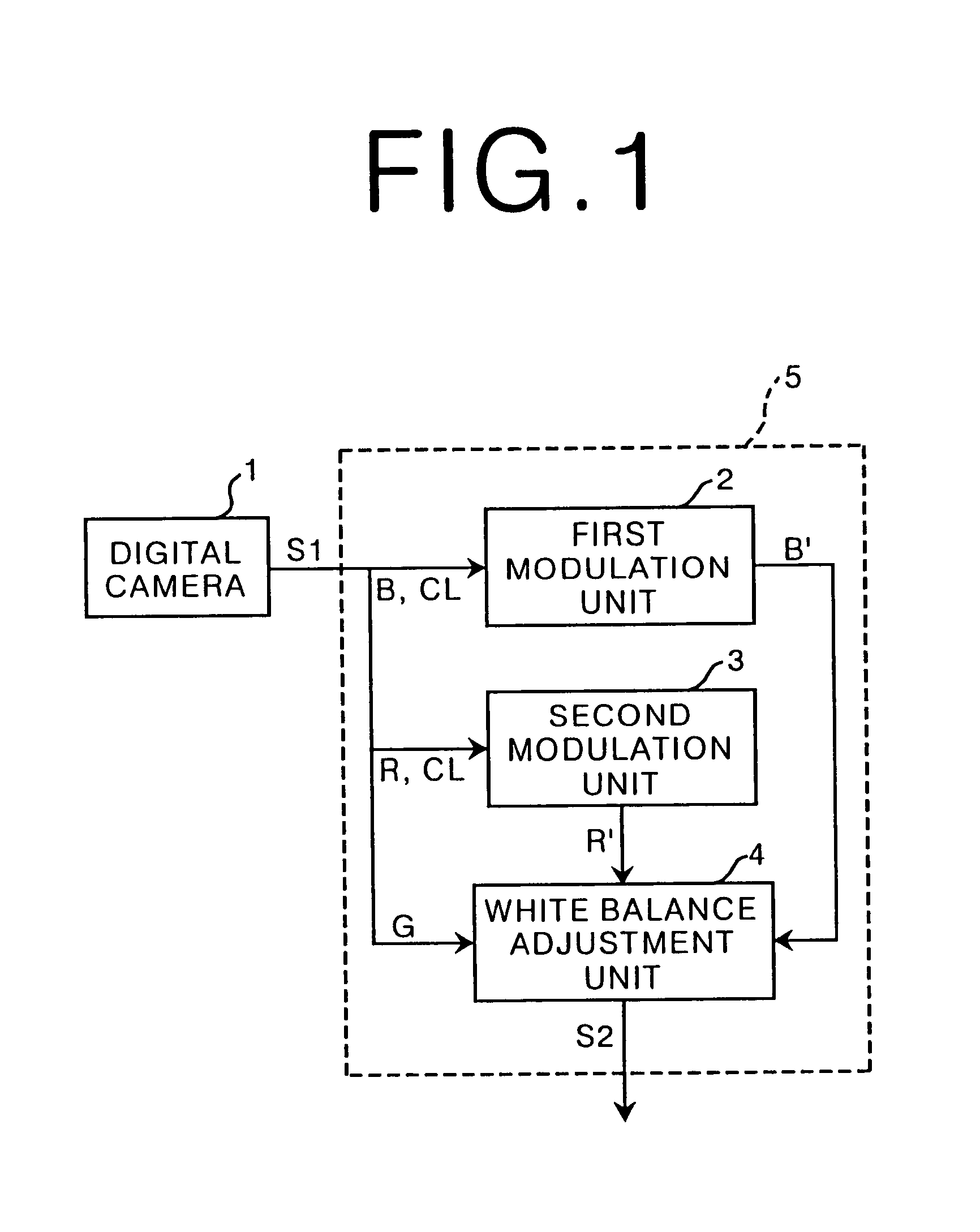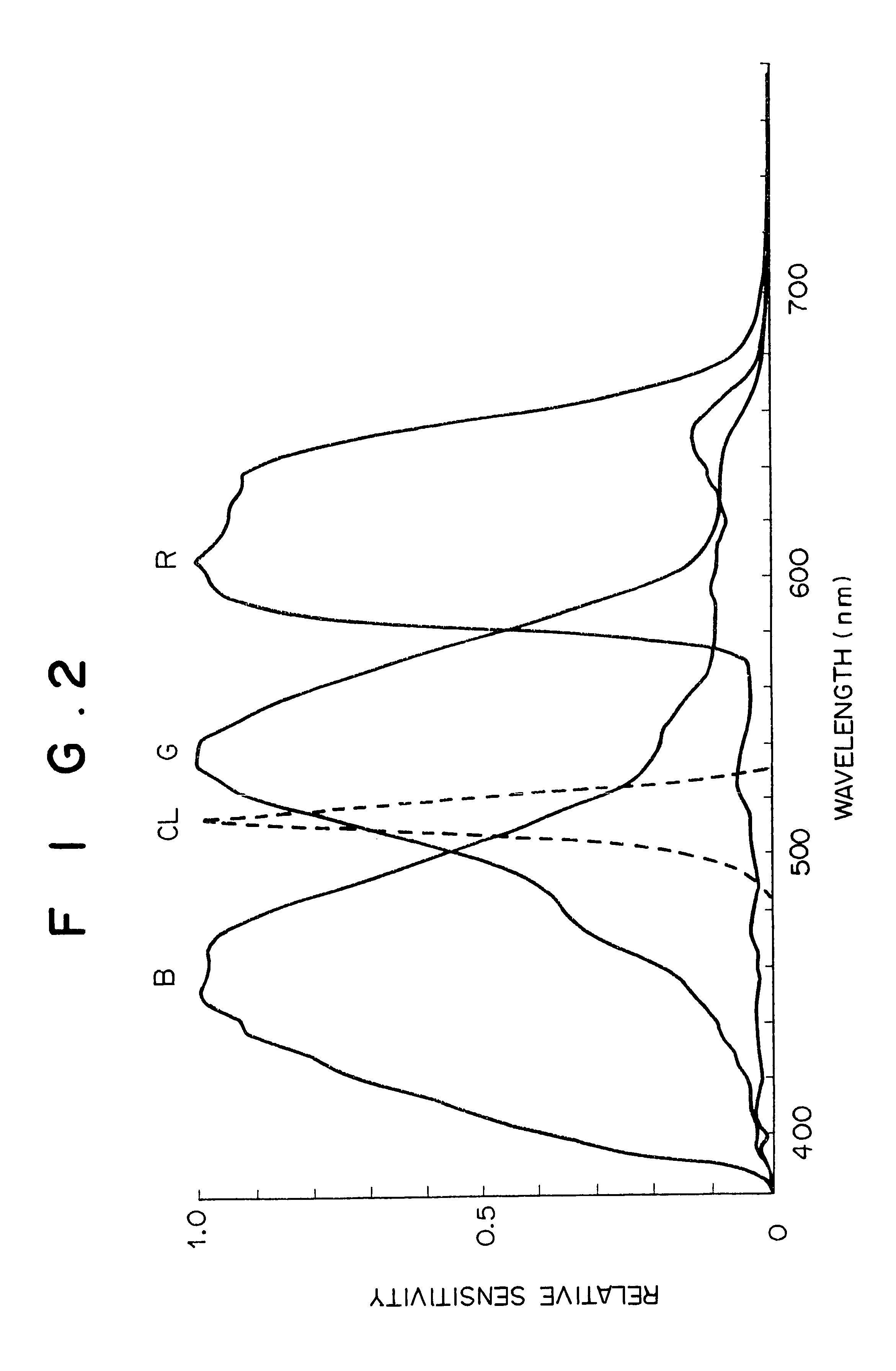Method and device for adjusting white balance based on primary color signals modulated with fourth color signal obtained by fourth sensor
- Summary
- Abstract
- Description
- Claims
- Application Information
AI Technical Summary
Benefits of technology
Problems solved by technology
Method used
Image
Examples
Embodiment Construction
Detailed explanations on embodiments of the present invention are provided below with reference to drawings.
FIG. 1 is a diagram illustrating the construction of an embodiment of the present invention. In FIG. 1, reference numeral 1 denotes a digital camera, and 5 denotes a white balance adjusting device.
The digital camera 1 in FIG. 1 is provided for picking up a color image of a subject, and comprises a B (blue) sensor, a G (green) sensor, and an R (red) sensor respectively producing a B (blue) signal, a G (green) signal, and an R (red) signal. A color image S1 is represented by the B signal, the G signal, and the R signal. The B sensor, G sensor, and R sensor each have a light sensing element for each pixel, and each element of the B sensor, G sensor, and R sensor has a spectral sensitivity distribution as illustrated in FIG. 2.
In addition to the B sensor, G sensor, and R sensor, the digital camera 1 in FIG. 1 comprises a CL sensor which produces a CL signal. The CL sensor has a li...
PUM
 Login to view more
Login to view more Abstract
Description
Claims
Application Information
 Login to view more
Login to view more - R&D Engineer
- R&D Manager
- IP Professional
- Industry Leading Data Capabilities
- Powerful AI technology
- Patent DNA Extraction
Browse by: Latest US Patents, China's latest patents, Technical Efficacy Thesaurus, Application Domain, Technology Topic.
© 2024 PatSnap. All rights reserved.Legal|Privacy policy|Modern Slavery Act Transparency Statement|Sitemap



